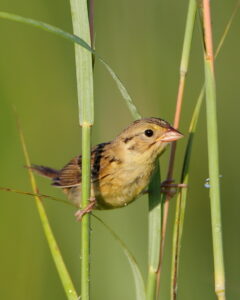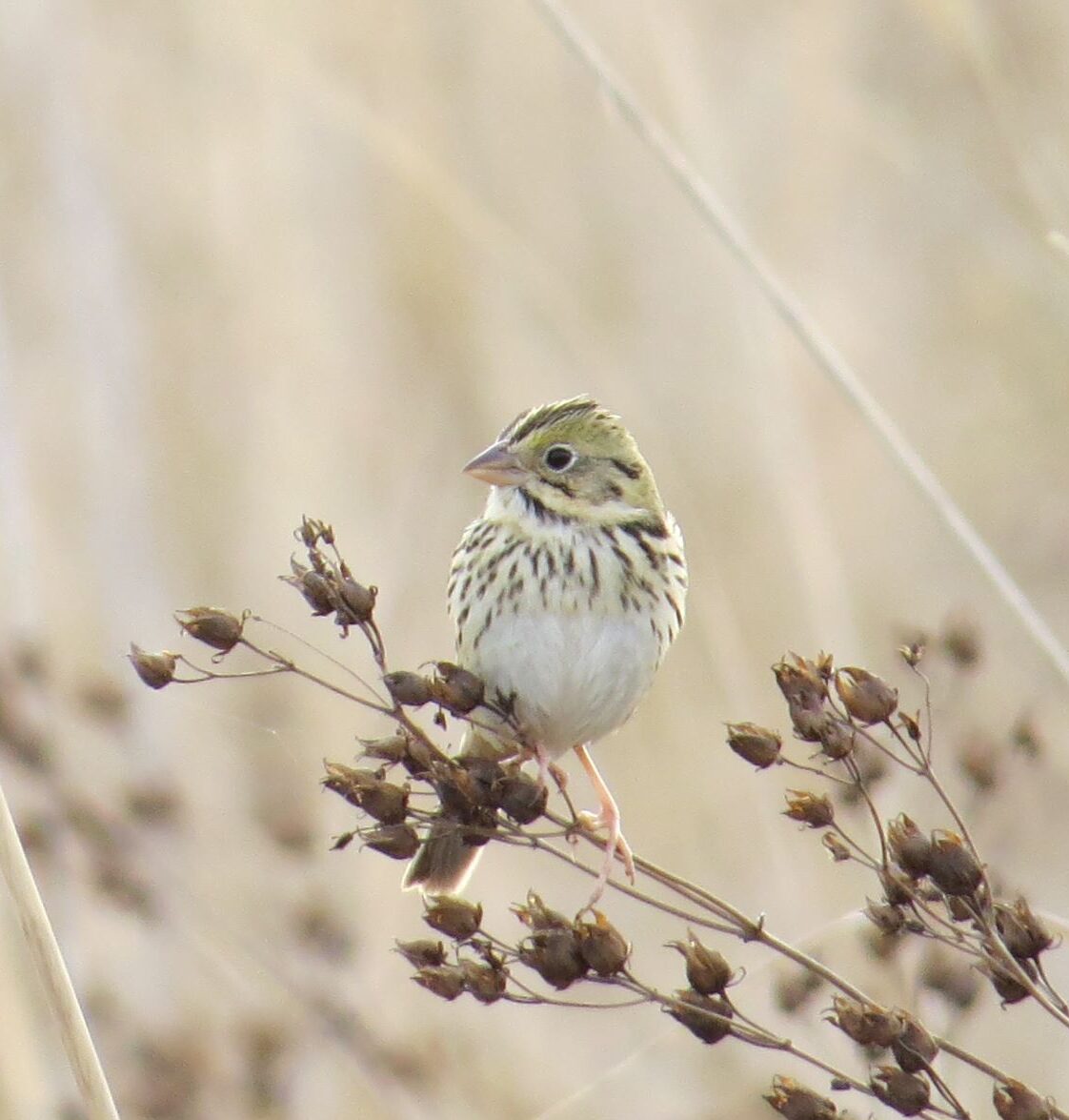Henslow’s Sparrow, Centronyx henslowii
Bill Rowe
Now that it’s April, approaching May, try walking into a dense grassy field, with thick ground cover and some emergent stalks and shrubs, and tuning your ears to soft insect-like sounds. With luck, you may hear a quiet, slightly chirping double note, something like tslick or tsileet. This is a Henslow’s Sparrow singing, advertising its territory to other males of its species and perhaps struggling to attract a mate, putting forth what is, to our ears, the least song-like production of any songbird. With more luck, you may have a chance to watch the singer perched up in full view. This obscure little bird has a long and complex history of losing its original habitat—native prairie in the Midwest, wet meadows and marshes in the east—then re-establishing itself in non-native grasslands such as hayfields, only to see those diminish in recent years as crops like corn and soybeans have taken over more and more farmland—and then trying again with other versions, like old strip mines converted to wildlife habitat. Over the course of two centuries, these alterations have left the Henslow’s Sparrow nearly absent from its former haunts in New England and the Atlantic coast but holding on and sometimes locally increasing in the Midwest. But wherever it breeds, it is habitat-specific; you won’t find it nesting anywhere but thick grassland. And for a greater challenge, you can try looking for it on its wintering grounds in open pine savannas of the southern states, where it simply hides in the grass and doesn’t sing. Footnote: It was first discovered in Kentucky, by J.J. Audubon, and named for a friend of his, the English botanist John Henslow.
IDENTIFICATION: Henslow’s is a small sparrow with a proportionately large head and bill and sharp-pointed tail feathers. It can usually be identified readily by its general color scheme, with an olive-toned head that varies from olive-green (typically) to olive-yellowish (sometimes) and wings of a light reddish or chestnut shade, streaked black. The breast is crossed by a band of finer streaks. The seldom-observed juveniles show hints of the basic adult colors but with little or no breast streaking, making them look more like another grassland bird, the Grasshopper Sparrow.
ST. LOUIS STATUS: Local and uncommon; not as numerous as in some parts of northern and western Missouri, but usually findable somewhere, e.g., suitable fields in Weldon Spring and Busch Conservation Areas. Seldom seen away from nesting sites, but occasional migrants will show up here and there, even in city parks.
Learn more and listen to the songs and calls of Henslow’s Sparrows here.


Adult singing: note light greenish head, light chestnut wings
Photo Credit: Danny Brown
Juvenile: note unstreaked breast
Photo Credit: Danny Brown




